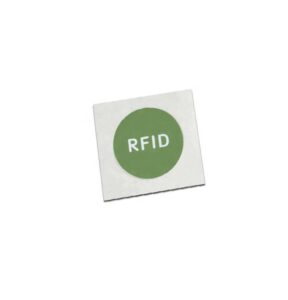Table of Contents
ToggleIntroduction
RFID (Radio Frequency Identification) tags can be categorized in various ways based on different criteria. This article provides an in-depth look at the classification of RFID tags, focusing on their power supply modes, carrier frequencies, modulation methods, operating distances, and chip types.

Classification by Power Supply Mode
RFID tags can be divided into two main types depending on their power supply mode: active tags and passive tags.
- Active Tags: These tags contain an internal battery that supplies power, enabling them to have a longer operational range. However, they are bulkier, more expensive, and have a limited lifespan, making them less suitable for harsh environments.
- Passive Tags: These tags lack an internal battery and rely on beam power technology, which converts received RF energy into DC power to operate the tag’s circuitry. Although their range is shorter compared to active tags, they are more durable and do not require a high operational environment.
Classification by Carrier Frequency
RFID tags are also classified based on their carrier frequency, which can be low, intermediate, or high.
- Low-Frequency (LF) Tags: Operating at 125 kHz and 134.2 kHz, these tags are used in short-distance, low-cost applications such as access control, campus cards, animal tracking, and cargo monitoring.
- Intermediate-Frequency (IF) Tags: Functioning at 13.56 MHz, these tags are used in access control and systems that require significant data transmission.
- High-Frequency (HF) Tags: Operating in frequencies such as 433 MHz, 915 MHz, 2.45 GHz, and 5.8 GHz, these tags are utilized in applications requiring long read-write distances and high-speed data transfer, such as train monitoring and highway toll collection. Their more narrow antenna beam and higher cost make them suitable for specific, high-precision tasks.
Classification by Modulation Methods
RFID tags can be categorized based on their modulation methods into active and passive modes.
- Active Mode: In this mode, the RFID tag actively transmits data using its RF energy.
- Passive Mode: Tags in this mode transmit data by modulating and scattering the carrier signal emitted by the reader. This mode is ideal for access control and traffic systems as it ensures only tags within a certain range are activated. Active tags are particularly useful where there are obstacles and for longer distances (up to 100 meters), as their signal only needs to pass through obstacles once.
Classification by Operating Distance
RFID tags can also be classified based on their operating distance:
- Dense Coupling Tags: Operating distance is less than 1 cm.
- Near Coupling Tags: Operating distance is less than 15 cm.
- Sparse Coupling Tags: Operating distance is about 1 m.
- Long-Distance Tags: Operating distances range from 1 to 10 m or more.
Classification by Chip
In an RFID system, the signal-receiving component is typically referred to as an RFID reader (or card reader). The primary function of an RFID reader is to facilitate data transmission with RFID tags.
Conclusion
Understanding the different classifications of RFID tags helps in selecting the right type for specific applications. These classifications, based on power supply mode, carrier frequency, modulation methods, operating distances, and chip types, provide a comprehensive framework for determining the best RFID tag for various operational needs.
